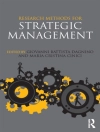In general, combustion is a spatially three-dimensional, highly complex physi- co-chemical process oftransient nature. Models are therefore needed that sim- to such a degree that it becomes amenable plify a given combustion problem to theoretical or numerical analysis but that are not so restrictive as to distort the underlying physics or chemistry. In particular, in view of worldwide efforts to conserve energy and to control pollutant formation, models of combustion chemistry are needed that are sufficiently accurate to allow confident predic- tions of flame structures. Reduced kinetic mechanisms, which are the topic of the present book, represent such combustion-chemistry models. Historically combustion chemistry was first described as a global one-step reaction in which fuel and oxidizer react to form a single product. Even when detailed mechanisms ofelementary reactions became available, empirical one- step kinetic approximations were needed in order to make problems amenable to theoretical analysis. This situation began to change inthe early 1970s when computing facilities became more powerful and more widely available, thereby facilitating numerical analysis of relatively simple combustion problems, typi- cally steady one-dimensional flames, with moderately detailed mechanisms of elementary reactions. However, even on the fastest and most powerful com- puters available today, numerical simulations of, say, laminar, steady, three- dimensional reacting flows with reasonably detailed and hence realistic ki- netic mechanisms of elementary reactions are not possible.
Norbert Peters & Bernd Rogg
Reduced Kinetic Mechanisms for Applications in Combustion Systems [PDF ebook]
Reduced Kinetic Mechanisms for Applications in Combustion Systems [PDF ebook]
购买此电子书可免费获赠一本!
语言 英语 ● 格式 PDF ● ISBN 9783540475439 ● 编辑 Norbert Peters & Bernd Rogg ● 出版者 Springer Berlin Heidelberg ● 发布时间 2008 ● 下载 3 时 ● 货币 EUR ● ID 6376894 ● 复制保护 Adobe DRM
需要具备DRM功能的电子书阅读器












